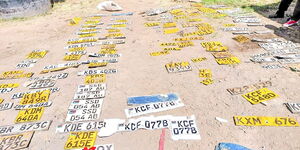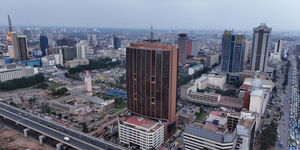Prince Al-Waleed bin Khalid Al-Saud, a Saudi Arabian prince who has been in a coma for the past two decades, has passed away.
Prince Al-Waleed had been in a deep coma since 2005, when, at just 15 years old, he sustained severe injuries in a tragic car accident while studying in London.
Since the accident 20 years ago, he had relied on a ventilator in the hospital to keep him alive, but he never regained full consciousness. He had suffered a brain haemorrhage and internal bleeding, which left him incapacitated and he remained unresponsive until his passing at age 35..
His recent passing has not only drawn renewed global sympathy but also intensified discussions surrounding the immense human and financial costs associated with such prolonged critical care and the actual cost of the round-the-clock treatment.
For audiences in Kenya, cases of families struggling with Intensive Care Unit (ICU) bills long after their loved ones passed on, the most recent one being the case of Boniface Kariuki, a vendor who was shot in the head and remained in ICU for almost two weeks, accruing over Ksh3.5 million in the process.
So, how much does the ICU really cost in Kenya?
Public vs Private Hospitals
Private hospitals often charge more for ICU beds, but this varies from facility to facility and the value of care.
According to the Jubilee Insurance, this could be between Ksh50,000 to Ksh250,000 for a bed per night.
Besides the bed, most ICU stays come with a lot more medical needs like surgery, scans, doctor fees, and medicines, which could quickly stack up.
In a nutshell, it is possible for the bill to cross the Ksh1 million mark within a few days.
In public hospitals like the Kenyatta National Hospital (KNH), the cost of an ICU bed is Ksh5000 per day, but once again, the bills stack up.
SHA Coverage
In March, the Ministry of Health announced that it would increase the daily funding for ICU and the High Dependency Unit (HDU) services.
The ministry revealed that the public insurance scheme will raise the daily ICU fee to Ksh28,000, up from Ksh4,600.
“HDU/ICU coverage has increased sixfold—from Ksh4,600 to Ksh28,000—ensuring families are protected from out-of-pocket payments during emergencies,” the statement read.
Grim Reality
Despite these crucial adjustments to public insurance, the grim reality for many Kenyan families remains a stark contrast to the sustained, expense-no-object care received by figures like Prince Al-Waleed.
For instance, the updated Ksh28,000 daily coverage, while a significant improvement, often still falls critically short of the vast sums accrued in private facilities, leaving families vulnerable to enormous, rapidly escalating debt that can quickly deplete life savings.
For thousands of Kenyan households, the emotional toll of watching a loved one fight for their life in the ICU is compounded by the immense financial pressure, often driving them to desperation, asset liquidation, and public appeals.
The Prince's two-decade battle, sustained by limitless resources, underscores the universal human desire to preserve life at all costs. Yet, in Kenya, that profound wish is frequently met with the harsh wall of economic reality, where the fight for life often means facing the very real threat of financial ruin.












